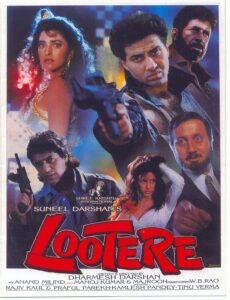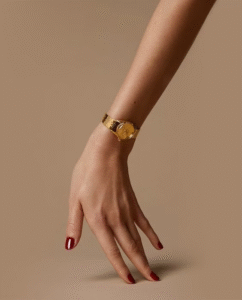
The case of copyright infringement filed against the celebrity tattoo artist, Kat Von D, was ruled in her favour by the Federal Court in Los Angeles. The artist had been accused of copyright infringement of an image that was reproduced in the form of a tattoo. The tattoo featured the jazz legend Miles Davis, based on the picture captured by the photographer, Jeffrey Sedlik. The case, as filed by Jeffrey Sedlik was on the premise that the tattoo artist didn’t hold a licence to reproduce his photograph, thus contributing to copyright infringement. There was no dispute on the usage of Sedlik’s photograph by Kat Von D, and she sought the defence of “Fair Use”. The primary issues included the question of substantial similarity between the tattoo and the photograph, which was used as a reference by the tattoo artist and the Court examined the issue of “fair use” of the copyrighted photograph.
What constitutes “fair use” of copyrighted works?
The Copyright Act, 1976, provides protection to creators of original work, including the prevention of unauthorised copying. “Fair Use” provides the right to use copyrighted material without permission for purposes such as criticism, reporting, comment and so on. This rule is applicable in the case for all existing copyrighted works. The “Fair Use” of copyrighted works can be established by four elements that are deciding factors. The factors can be stated as:
- The purpose and the character of the use, which includes such use as of commercial nature and educational purposes.
- The nature of the copyrighted work
- The amount of work which could substantially amount to copyrighted work as a whole
- The effect of the work in the immediate market regarding the value of the copyrighted work.
Popular Precedents: Andy Warhol Foundation vs. Goldsmith
The court referred to the case of “Andy Warhol Foundation vs. Goldsmith” , a US Supreme Court Ruling which was used as an amicus brief by Sedlik. In this case, Andy Warhol violated the rights of Lynn Goldsmith’s copyright, as he used the Musician Prince’s photograph for the purpose of creating a cover for the magazine Vanity Fair.

“Lynn Goldsmith, a professional photographer, was commissioned by Newsweek in 1981 to photograph Prince, then an “up and coming” musician. Goldsmith retained the copyright in her photographs and subsequently granted a limited license to Vanity Fair for a “one time” use of her photo as an “artist reference.” Vanity Fair hired the well-known artist Andy Warhol to create a silkscreen based on Goldsmith’s photo for the November 1984 issue of Vanity Fair. It credited Goldsmith for the “source photograph” and paid her $400.
Unbeknownst to Goldsmith, Warhol had made a total of 16 different works based on Goldsmith’s photograph of Prince, collectively known as the “Prince Series.” In 2016, following Prince’s death, Vanity Fair obtained a license from Andy Warhol Foundation for the Visual Arts (“AWF”) to use another of the works (“Orange Prince”) for the cover of a special edition commemorating Prince. AWF received $10,000 and Goldsmith received nothing.”
The court made several observations with respect to the determination of “fair use” in the case of copyright infringement. According to the Court of Second Circuit as well as the Supreme Court, the use of the work i.e. commercial, non-profit or for education, takes precedence over other factors provided that the use in the present case was not transformative in nature.
Verdict of the case: Tattoo as Fan Art

The verdict was in favour of Kat Von D, and the tattoo created by Kat Von D was labelled as “fanart” and not an infringement of copyrighted work. Although the photographer did not hold any rights over his photograph, he conveyed resentment during the proceedings and claimed that the tattoo artist had stolen his art.
This case had the capacity to perish the entire tattoo industry, however but with this win of Kat Von D, the tattoo industry can continue to thrive without fear of extinction. The proceedings that took place in the court of Los Angeles went through a rigorous investigation and reached to the conclusion that there was no copyright infringement in the case. Kat Von D’s legal advisor expressed that after all the highs and lows of the case never should have been bought in the first place, and that the jury recognised the unreasonability in claiming copyright infringement in this matter. He further added that licensing the image to others including tattoo artists was a major part of how he made his living.
With the end of this trial, the importance and dignity of tattoo artists was saved. The derivatives and reproduction of copyrighted works were allowed and made hassle free for tattoo artists. This case was not only subjective to tattoos but also to the fair use of copyrighted works – which now includes the tattoo as an art form to become derivative. The conflict of ownership revolves around the concept and designs by which tattoo comes into existence. The tattoo artists own the rights over the tattoo they create as it is an original artwork but the person with the tattoo also holds some rights.
Legal Remedies Available in Different Jurisdictions

When the question arises of whether a tattoo artist can sue for the copy of his/her designs then the answer is yes. A tattoo design is considered as a copyrighted artwork of a tattoo artist and if used without their permission then they hold the right to sue. But the question of ownership is debatable, especially in the case of custom designs, where the ownership can be joint. Under the copyright law, a tattoo is considered as an artwork which can be held as rights of the tattoo artists. Art as a concept is created with an idea of a fixed medium of expression which includes photographs and paintings. When it comes to tattoos, the medium – the human body- is considered a work of art created by an artist, which gives the artist the rights over the tattoo. The rights over the tattoo are restrained in nature – if the tattoo is used inappropriately then the tattoo artist can seek legal actions.
There are international bodies which protect the art work of tattoo artists across many countries. In Europe, a tattoo is considered an art which comes under copyright law and the ownership stays with the creator even after 70 years from the date of his death.

Countries like China and Vietnam have conservative views on tattoo and it shall not pass without government. China has recently banned from making tattoos for all the celebrities including players on football teams. Asian countries have democratic views also but Japan just like China has implemented strict rules on tattoo making.
In India, a tattoo is considered as an artwork under section 13(1) of the copyright act, 1957. An artwork can include sculptures, paintings, engravings, photographs or tattoos inscribed on human skin – these are considered as “fixed tangible mediums”. A tattoo artist holds its rights under section 18 of the copyright act,1957. In India, the protection of artistic works is mentioned in the act, which lasts for the entire lifetime of the artist plus 60 years after his death. This means that in total 60 years of protection of artistic work in India.
In Indian Copyright Act includes moral and commercial rights of an artist. The moral rights are in which the relationship between the artist and his artwork is protected. Whereas, commercial rights cater to the economic aspects of the art like reproduction, distribution etc. The clash happens when the commercial rights of an artist collide with the publicity rights of the individual who has the tattoo.

The moral rights in India are the right to be attributed as the artist and the right to not have attributed the work to someone else and the right not to have the work subjected to anything that will expose it to harm or damage the artist’s reputation. With the ever-growing mediums of expression presented by the artist across the globe, it is important for the copyright law to demonstrate the issues and specific medium of expression along with publicity rights – to each its own.
The journey of creation of tattoo and finding a way for its rightful existence has been a rollercoaster. Nevertheless, the Kat Von D Case provides with landmark judgement which clearly provided with the copyrights to a tattoo artist. With the judgement, we can understand that tattoo is an art which can be reproduced and used while abiding with laws. Kat Von D case holds historical significance with respect to copyrights in the tattoo industry, setting a precedent for the coming years.








